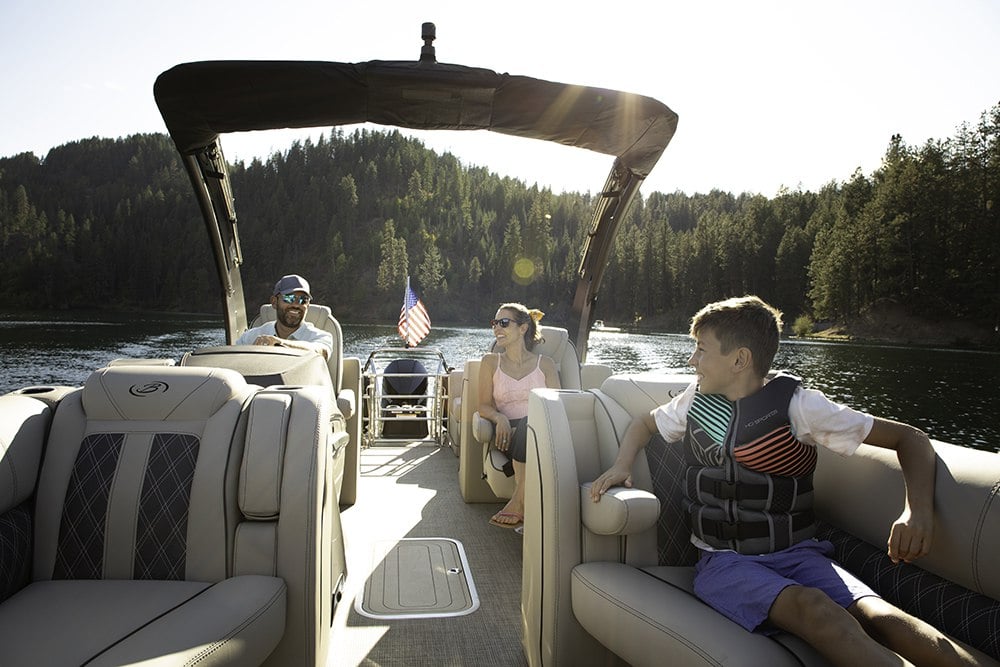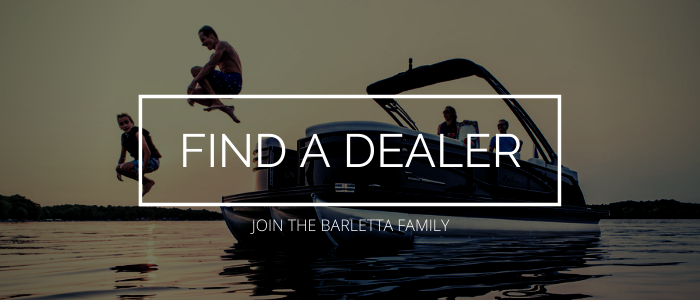Pontoon Boat Safety 101: The Owner’s Complete Guide
It’s the side of boating we never want to talk about. It’s thinking, that won’t happen to me, that can get us in trouble. It’s thinking that boats are far easier to operate than cars and require no training to be a pro.
I'm talking about boat accidents. The harsh reality of what happens when you ignore the laws and put no time or effort into learning before you jump in the captain’s chair. Boaters safety saves lives, and there is a strict set of rules in place for that very reason.
Based on the data collected by the US Coast Guard regarding boating accidents in 2019, the percentage of deaths by drowning was far greater in accidents that involved a boat captain who was not properly educated in boater’s safety.
Where instruction was known, 70% of deaths occurred on boats where the operator did not receive boating safety instruction. Only 20% percent of deaths occurred on vessels where the operator had received a nationally-approved boating safety education certificate. - US Coast Guard Website.
That is an incredible price to pay for something as easy as taking a local boater’s safety course or reading through the boating laws written by the US Coast Guard (USCG), at the very least.
As a life-long boater, I believe that boating is the ultimate pastime. I am also incredibly grateful that I took a boater’s safety course before I was old enough to even drive a car. It’s a small amount of effort for what you get in return.
My hope is that I can show you how easy it is to educate yourself before you hit the water. Let’s look at the basics of boater’s safety as it applies to pontoon boats.
- Safety gear
- State and local laws
- Flotation devices
- Navigation laws
- Manufacturer safety laws
What Gear Does Your Pontoon Boat Require?
The list of safety gear that you should keep on board, according to US Coast Guard recreational boat laws, is based on the length of your boat and engine type. Since we’re focusing on pontoon boats, I’m going to list out the most important safety gear that falls into the average pontoon length category.
Most pontoon lengths will fit into the 16'-26’ category and have a gas powered outboard engine. If the overall length of your pontoon is outside of this range or your pontoon boat has a different type of engine, there is a category for you and you may be required to have more or different equipment on board.
This is the safety equipment required for boats 16’-26’ with a gas powered outboard engine:
- State registration sticker attached to the exterior of the boat and registration documentation carried on board whenever underway
- State registration numbers attached to the exterior of the boat - see local boating laws for attachment specifications
- One wearable Coast Guard approved life jacket for each person on board
- One Coast Guard approved throwable device
- Visual distress signals - flares, distress lights, smoke signals, or orange distress flag
- One fire extinguisher - be sure to check the expiration date and renew when necessary
- Sound producing device other than the boat’s built-in horn - handheld air horn or athletic whistle
- Navigation lights - these are the red and green lights that are built into the stern of most pontoon boats
- If your pontoon boat has a toilet installed it must have an operable MSD Type I, II, or III
You will have different requirements based on this length range if your boat has a different type of engine than an outboard, or if your vessel measures at least five net tons. As I mentioned, nearly all pontoon boats have a gas powered outboard and weigh less than five net tons, so these requirements do apply to most pontoon boats.
Aside from USCG requirements, you must also check your state and local laws to make sure you’re in compliance for your area. Each state varies in what is required and lawful.
State and Local Laws
Your local laws may vary as well, so make sure to cover all bases. For instance, you might boat on a small, shallow body of water that has a speed limit. I’ve even seen small lakes that only allow you to boat in one direction around the perimeter.
You’re not likely to find these laws filed under the US Coast Guard, they are more likely to be listed through your state and local water authority such as DNR or the local sheriff’s office.
Knowing the laws as they pertain directly to your body of water can save lives. For a quick reference on accessing state laws check out the State Boating Laws guide provided by the NASBLA (National Association of State Boating Law Administrators).
Another helpful resource that they provide is this boating safety dashboard. This tool is a great way to access information quickly regarding things such as life jackets, registration numbers, driving while under the influence, and much more.
If you have further questions on what your state and local laws are or how to access them, use this State Contact guide to find out who’s in charge for your area. If there’s any doubt on what your local laws require, it’s worth a phone call.
Flotation Devices 101
One of the most critical pieces of safety equipment on any boat is a flotation device. There are two types I'm going to discuss that are equally important and both required to have on board.
First, you must have one Coast Guard approved life jacket for every person on board. The life jacket must fit the person it’s made for. That means, adult sized lift jackets for adults and child sized for children.
It's recommended that children under 10 should wear their life jacket at all times in the boat while underway. Check your local laws to confirm the age restriction for your area.
There are many different types of USCG approved life jackets and this is a guide on how to choose the proper one for you. Among all boating accessories, this is the most important, so take the time to learn which is best for your needs.
It’s critical that if the life jackets are stowed away, everyone is aware of their location and how to put them on. Depending on the type of life jacket you choose, you may want to educate yourself on how to properly apply it. Some can be trickier to maneuver than others.
To learn more about the importance of life jackets and tips for making sure you have the right gear, the USCG has put together a comprehensive list for recreational boaters.
The second type of flotation device that’s required for your pontoon boat is called a throwable device. You are required to carry one throwable on board at all times.
This is a personal flotation device and is designed to be thrown overboard to a person who is having trouble in the water with risk of drowning.
There are three types of USCG approved throwable devices those are; buoyant cushions, ring buoys, and horseshoe buoys. This device must be quickly accessible and in arms reach in case of use.
Keeping these items on board at all times is required by law. Most pontoon boats have plenty of storage that’s perfect for all the flotation devices you need.
Navigation Laws
There are a ton of laws and regulations surrounding navigation while your pontoon boat is underway. For a full list of USCG navigation laws, check out this list of rules, definitions, and scenarios explained.
There are probably laws that you didn’t know existed when it comes to driving a boat. For instance, the USGC is implementing a new law as of April 1, 2021 that enforces the operator of the boat to attach the engine cut-off link to their personal flotation device or clothing.
Boat manufacturers have been required by law to include an engine cut-off switch on all boats being built from 2008 on. Some manufacturers included this switch voluntarily before that timeframe, so you may see it on older boats.
Now, the law says you have to attach the cord to your person while underway. If you don’t have a good spot to clip the lanyard on your clothing, making a loop around your arm or leg works too.
The key to safe night boating is knowing the navigation laws as they pertain to lights. Lights will be a key safety feature that will help you stay safe on the water after the sun goes down. Check your local laws to learn about speed limits at and after dusk.
It’s also good to educate yourself on which lights have what meaning. For instance, the red and green lights on the bow of a boat are there to signal other boaters on which side they should pass.
If you’re approaching a boat at night and you’re on the green side, you can pass. If you’re approaching on the red side, this means stop. This system is in place to help boaters avoid collisions after dark.
It’s laws like this that you might not be aware of but are extremely detrimental to safe boating practices. As I stated before, also check your state and local navigation laws so that you’re in compliance while underway in your area.
Built for Safety
There is also a set of laws by the USCG that pertain directly to boat builders. Any reputable pontoon boat manufacturer follows these laws to a T.
A few examples of this are optional safety stanchions and chains if you plan to sit rear facing while the boat is underway. Features such as fire extinguishers, port, starboard, and stern lights, engine kill switch with lanyard, and a horn should all be a part of your boat’s standards.
There are other small items that are used for compliance such as stickers that spell out the boat’s weight capacity, warning labels, and other components that the manufacturer will include so that you can boat safely.
A safety hazard to be aware of is Carbon Monoxide build up. If your engine is running, or a nearby buy engine is running, there is a potential for Carbon Monoxide to build up and accumulate under the deck and toons.
This is a big deal when kids are swimming under and around the pontoon. If the wind is not moving the gases can build up and become dangerous for those in the immediate vicinity. This is an example of what you will find on the warning stickers fastened to your boat.
Take all recommendations and warnings written on these labels seriously. They are in place because it’s the law and you will be a safer boater for it.
Take the Next Step Towards Safety
When it comes to boating safety, I highly recommend educating yourself before you hit the water. Learning the USCG requirements should be your first step. Then narrowing in on your state and local laws is next.
You might also want to check with your boat dealer as many of them offer Coast Guard days. This is when a boat safety inspector comes to the dealership and will check your boat for you to let you know what safety equipment you need to add or update. Once the inspection is done, they will give you a sticker of approval that you can add to your vessel if you want.
I also encourage you to take a boater’s safety course no matter if you’ve been a long-time boater or you’re new to the game. It’s always worth keeping up on safety education even if you’ve taken a course in the past.
The USCG offers this list of approved courses that you can take to further your knowledge of boating laws and safety tips. Another awesome resource is the USCG app. It’s full of easy to use widgets and will even give you a list of required safety equipment based on the length of your boat and engine type.
With all of the ways you are able to educate yourself on boater’s safety, there’s no excuse not to. It could save your life or the life of a loved one.



